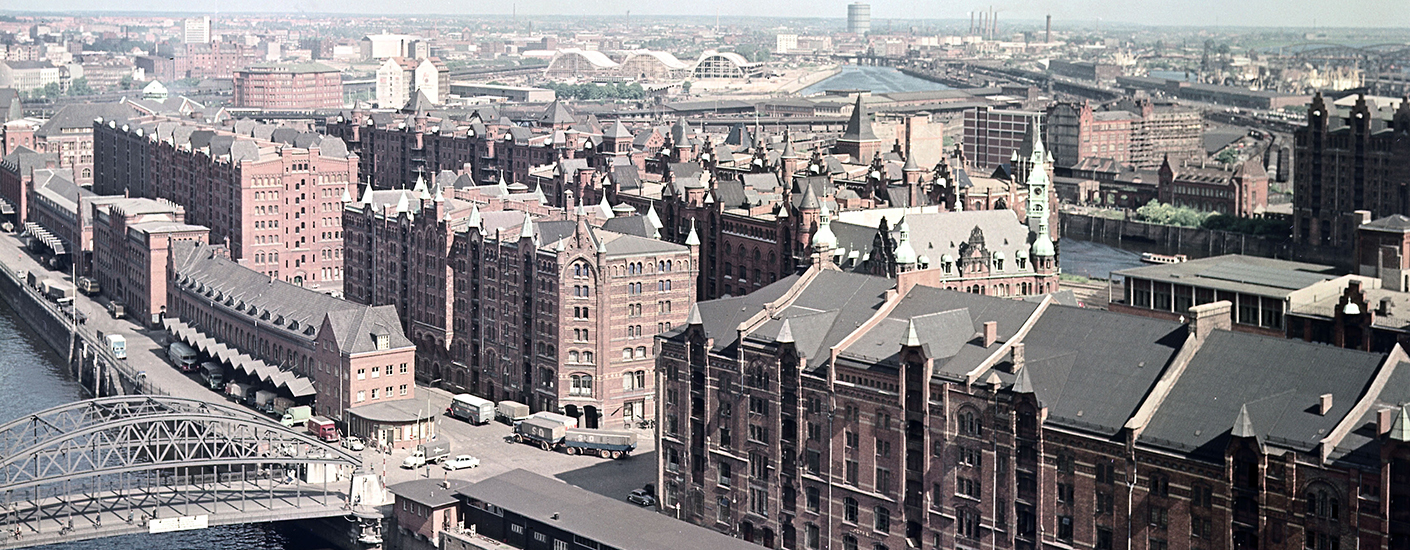The History of the Hanseatic City
Hamburg since 1800
A brief insight into the events that shaped the history of the World Heritage Site.
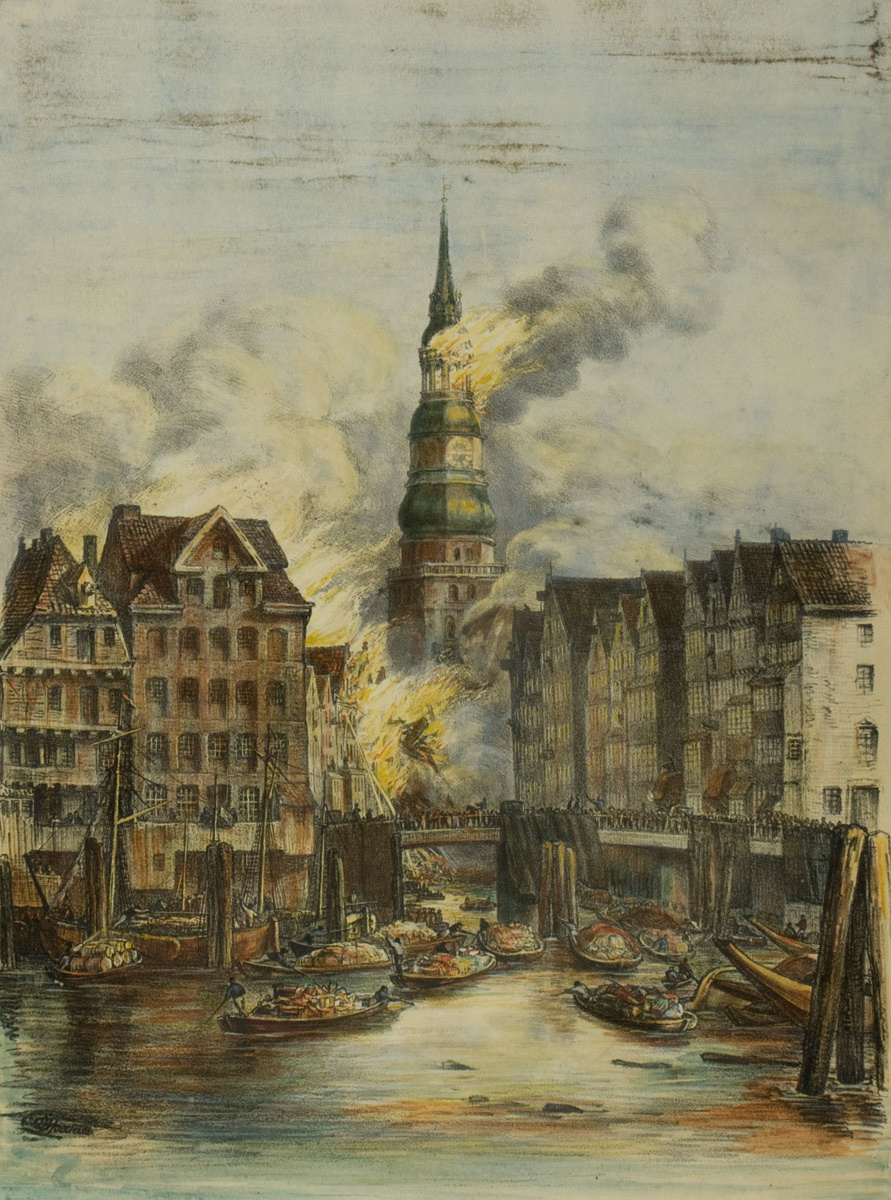
1842
1842
Phoenix From the Ashes
The Great Fire
On 5 May 1842 a fire broke out in the attic of a tobacco merchant's shop and spread rapidly. The fleets were emptier than usual due to a drought and did not supply enough fire water. The streets were crowded with onlookers and residents who wanted to bring their belongings to safety, so that the firemen were hindered in their work. Because of their white clothing, the men were also called ``Wittkittel`` (white coats). The fire raged in a north-easterly direction for three and a half days, destroying much of Hamburg's city centre. The destruction was followed by reconstruction, which still characterises Hamburg today.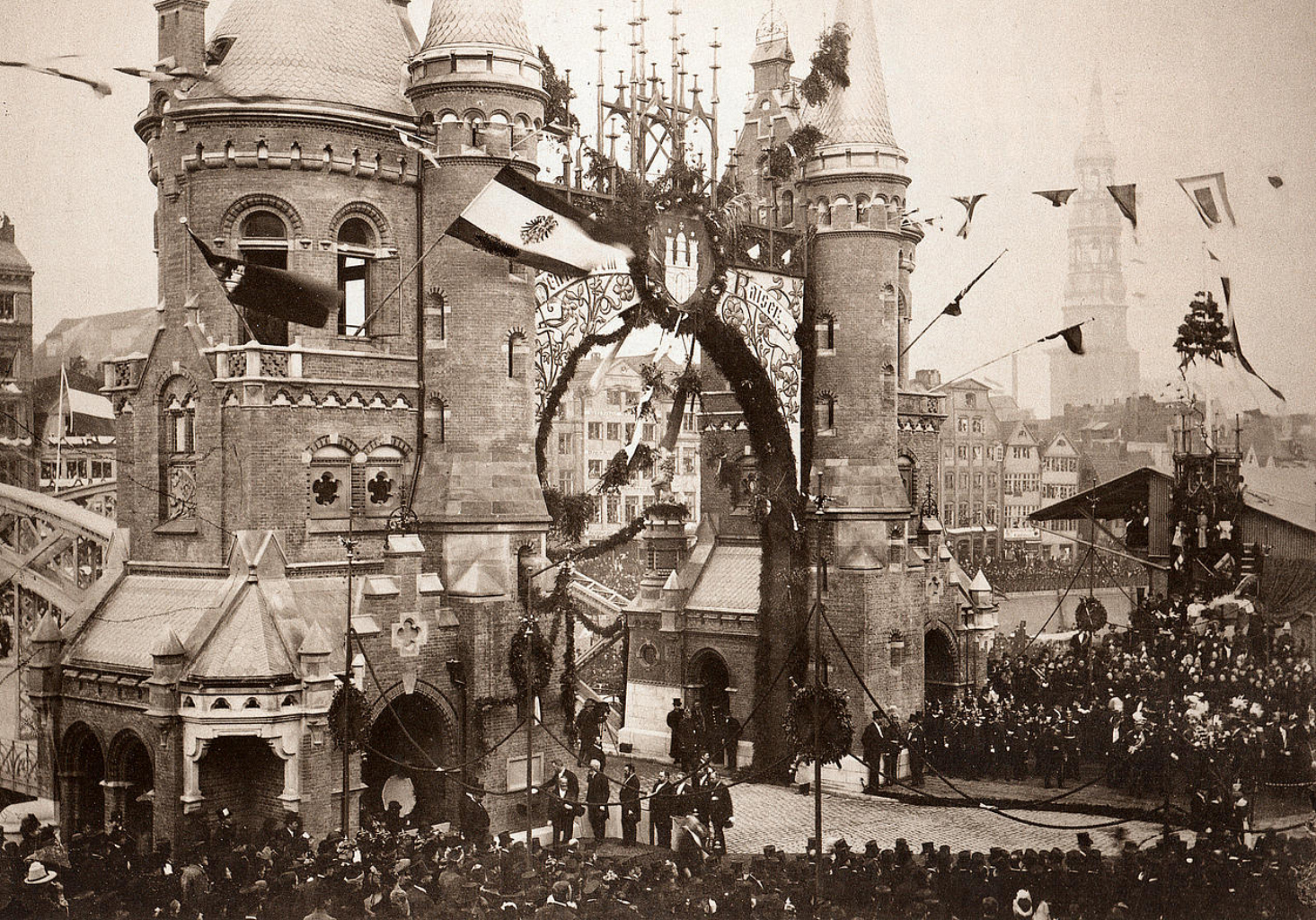
1881
1881
International Trade in the Free Port
The customs union agreement
In 1871 Hamburg joined the German Empire, but the city remained a customs exclusion zone. This did not change until the customs union treaty of 25 May 1881, which came about after long negotiations with Reich Chancellor Bismarck. In return, the free port was to be created, an area in which neither customs duties nor import turnover tax had to be paid. The German Reich contributed 40 million Reichsmark to its construction costs of 106 million Reichsmark. In the customs annexation agreement, the construction of the Speicherstadt was also decided, which was built from 1883.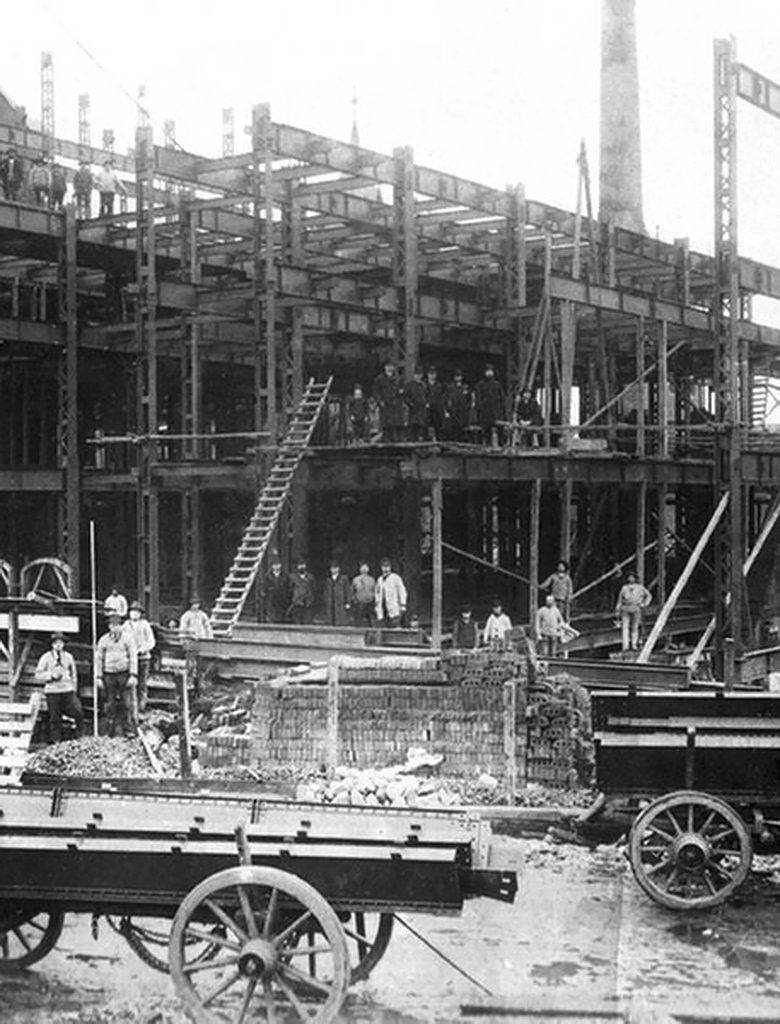
1883
1883
The City of Warehouses Emerges
Building Decision Speicherstadt
From 1883 onwards, a location house and administrative area was planned for the ``new`` port and implemented in record time by HFLA (today HHLA) under the direction of Ing. Franz Andreas Meyer. The infrastructure was completely redesigned. Wharves and the buildings were constructed in the so-called Hanoverian style. In this process, some 24,000 people lost their homes and 1,100 houses were demolished. Alfred Lichtwark, former director of the Hamburger Kunsthalle, coined the phrase ``Free and Demolition City of Hamburg`` during this period. Before that, simple houses of the poor stood on the Kehrwieder and baroque luxury houses of the rich stood on the wall frame.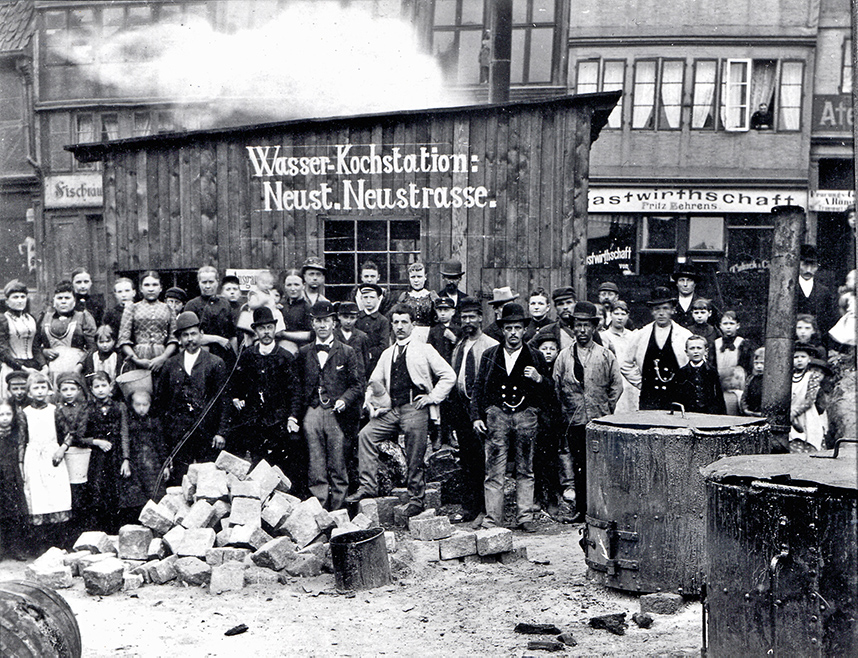
1892
1892
Death From Water
Cholera
The cholera epidemic put Hamburg in a state of emergency in 1892. Many topics that are currently on everyone's lips during the Corona Pandemic were already on the agenda in 1892. The events in the city were captured in photographs.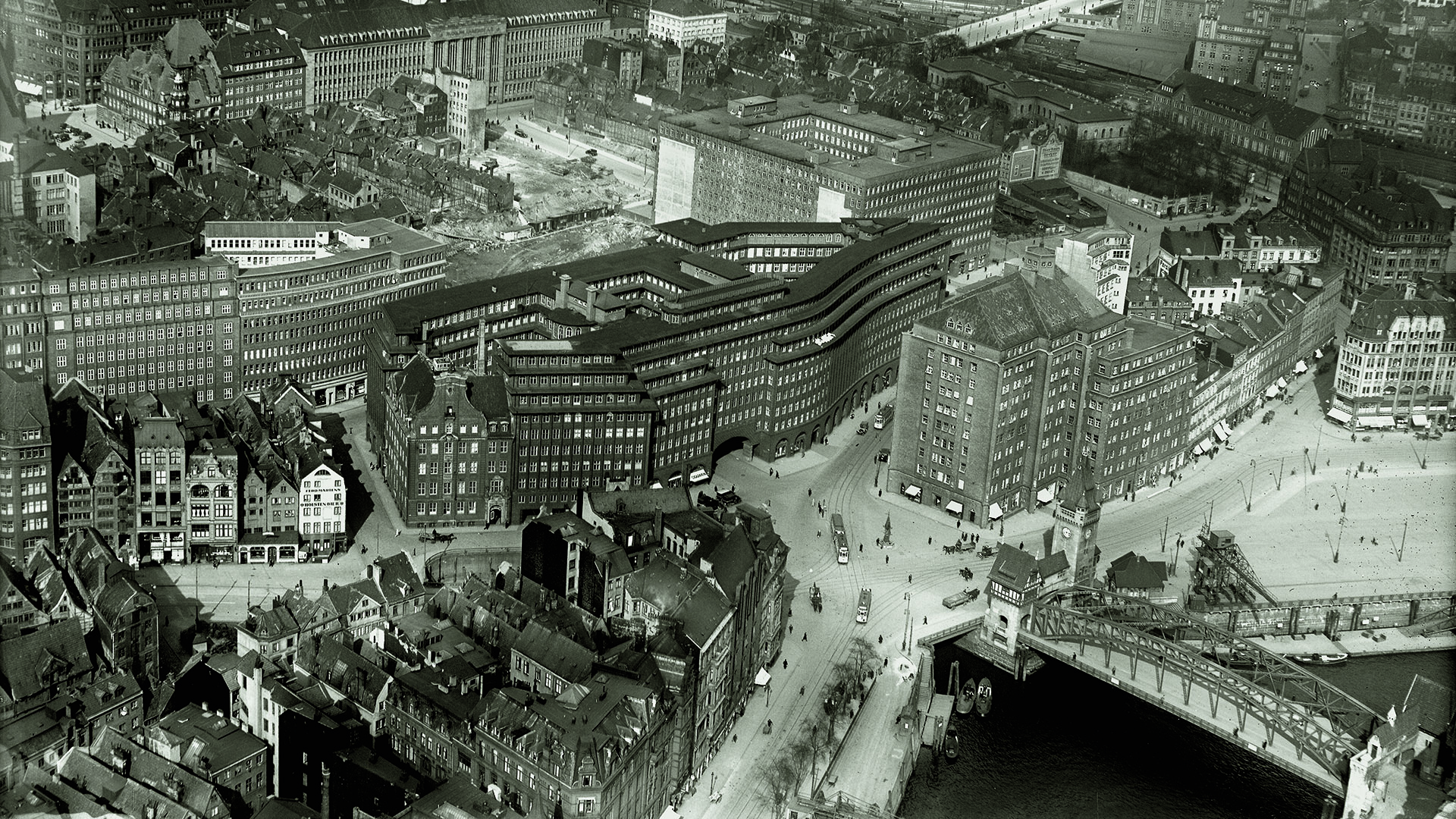
1922
1922
Offices Offices Offices
Kontorhaus District
After the devastating cholera epidemic in 1892, the Senate decided to redevelop large areas of Hamburg's Old and New Town. Initially the redevelopment was implemented in the Neustadt. On the north side of the customs canal, in the immediate vicinity of the Speicherstadt, the Kontorhaus District was built in the 1920s and 1930s and in parts of the 1950s. The quarter got its name from its monofunctional use as a tenement office building, which has been commonly referred to as Kontorhaus since 1910 in Hamburg. The quarter was connected to the Speicherstadt by the Große Wandrahmbrücke. The Chilehaus, the Meßberghof, the Sprinkenhof and the Mohlenhof, which form the core zone of the quarter, stand out from the other buildings in the Kontorhaus quarter due to their exceptional architectural quality. With the exception of the third construction phase of the Sprinkenhof, all of these buildings were built during the Weimar Republic and are among the most important office housing designs of their time.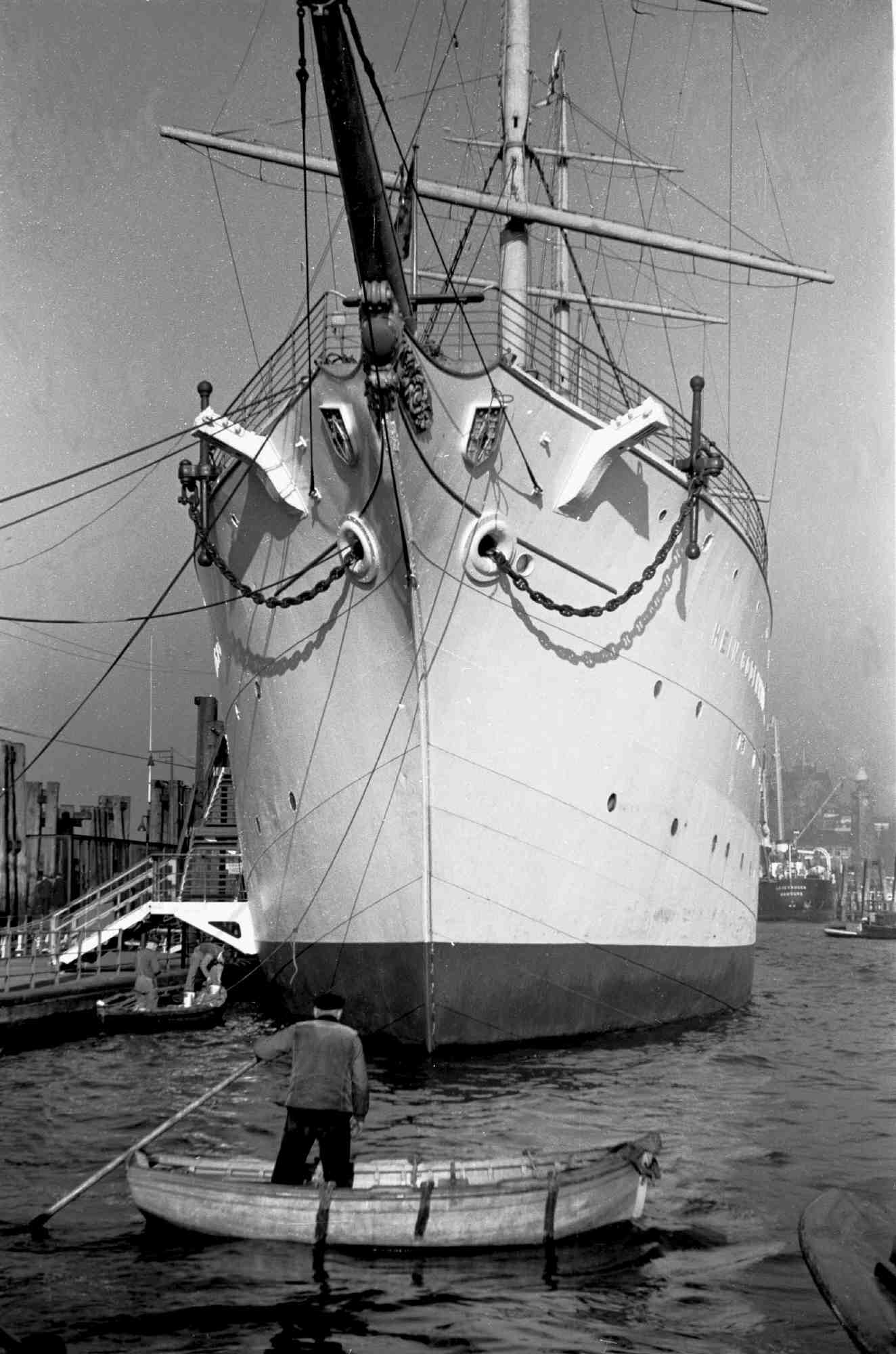
1937
1937
Hamburg as We Know It
Greater Hamburg Act
On 26 January 1937, under the National Socialists, the Greater Hamburg Act was passed, which came into force on 1 April of the same year. Economically important areas from neighbouring Prussian districts and independent cities were incorporated into Hamburg. Among the 30 new municipalities were the former towns of Altona, Wandsbek and Harburg-Wilhelmsburg. In return, Hamburg ceded Ritzebüttel with its islands Scharhörn and Neuwerk to Prussia, in addition to Geesthacht, Großhansdorf and Schmalenbeck. In addition, Hamburg had to cede further areas around Cuxhaven and smaller Hamburg exclaves. After a transitional phase of twelve months, the unified municipality of the Hanseatic City of Hamburg was proclaimed on 1 April 1938. Hamburg thus grew from 415 to 745 square kilometres and by almost half a million to 1.68 million inhabitants.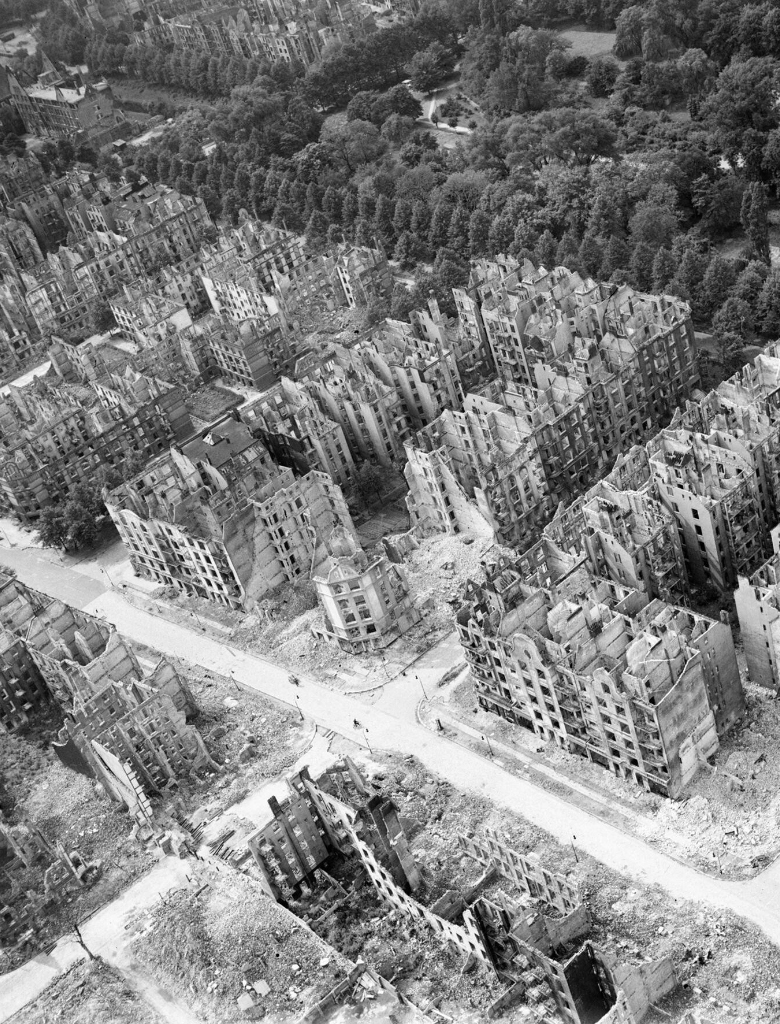
1943
1943
Operation Gomorrha
Firestorm
British and American air raids on Hamburg from 24 July to 3 August 1943 destroyed large parts of Hamburg. In five night raids and two day raids, around 35,000 people died, about 900,000 lost their homes and 80% of the port was destroyed. The Allies followed a two-phase bombing strategy: The demolition bombs covered the roofs, the subsequent fire bombs set fire to the buildings. A heat wave lasting for weeks contributed to the bombs triggering veritable firestorms, and the fire became increasingly fanned. Hamburg was to be completely destroyed. A thunderstorm prevented further air raids and the planned total destruction of the city.
1962
1962
Breaching of the Levees
Storm surge
The storm surge in the night from 16 to 17 February 1962 triggered a flood catastrophe of unknown dimensions. Most of the people of Hamburg felt safe on this stormy night and had no idea of the approaching catastrophe. The Elbe island of Wilhelmsburg was hit hardest by the breach in the dyke at the Spreehafen. At that time, more than 60,000 people lived there and when a huge tidal wave flooded the first areas around 1 a.m., it was too late for an evacuation. The same happened to the inhabitants of the Veddel, in the Alte Land and in Billwerder-Moorfleet. Approximately 150,000 people were trapped by the water and urgently needed help. About 25,000 national and international helpers fought against time and brought 20,000 people to established emergency quarters. In spite of the careful and rapid assistance, 317 people died on Hamburg territory. Measures were then taken and implemented to prevent an even greater storm surge later on.
1966
1966
After the Boom
Container Trade
With Economics Senator Helmuth Kern, the Hamburg Senate decides to expand Burchardkai into a container terminal. The handling of combined container and general cargo begins. The port undergoes its second major change after the construction of Speicherstadt. Containerisation and shipyard demise - the changes in port operations characterised Hamburg in the 1970s and 1980s.
2013
2013
Speicherstadt Loses Its Free Port Function
Repeal of the free zone status
After more than 120 years, the Hamburg Free Port was abolished on 1 January 2013 in the interests of the development of the port and the city. Since then, the entire port of Hamburg has been a so-called ``sea customs port`` under customs law, like most of the large ports in the European North Range. At the same time the Speicherstadt was released from the port area.
2015
2015
Heritage of Humanity
